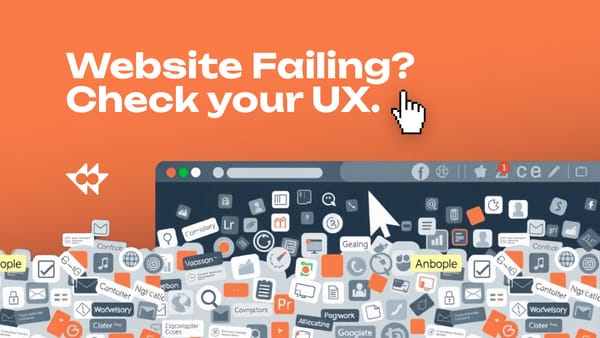How Website Audits Can Help You Sell Strategy, Not Just Tactics

The Untapped Potential: Audits as Proactive Business Builders (Not Just Fix-It Lists)
Let's face it, waiting for clients to come to you is like waiting for the phone to ring. Sound familiar? In today's market, being proactive is the name of the game.
Think of website audits as more than just checklists of things to fix. They're powerful tools for initiating conversations, uncovering hidden needs, and ultimately, landing bigger projects. It’s about shifting from being a reactive service provider to a proactive strategic partner.
The secret? A "value-first" approach. Offer a mini-audit upfront to open doors and demonstrate your expertise before they even ask.
Step 1: Identifying the Right Candidates & Occasions for an Audit-Led Conversation
Who should you target with your audit-powered approach?
- Prospects: Use a quick audit to add value in your initial outreach or follow-up. Show them you're already thinking about their needs.
- Existing Clients: Suggest periodic health checks, offer post-project reviews, or leverage the audit when discussing new requests (even small ones!).
The key is offering a "complimentary quick review" that adds value without devaluing your core services.
Step 2: Conducting an Efficient, Insightful Audit (Without Drowning in Data)
Manual audits can be time-consuming, and frankly, a bit overwhelming. For the purpose of sparking conversations, you need speed and clarity.
That's where tools like Web Gremlin come in. They give you a quick, comprehensive overview of key areas like UX, SEO, performance, and accessibility. This lets you quickly narrow down the key issues and focus on 3-5 findings that tell a compelling story and point to larger opportunities.
Step 3: Crafting the Conversation: From Audit Finding to Project Opportunity
How do you turn technical jargon into compelling reasons for clients to invest in bigger projects?
The "Problem-Impact-Opportunity" Framework
- Don't just list issues. Explain their business impact. For example, "Slow load time" translates to "losing 20% of mobile visitors," which is directly "impacting sales by X."
- Frame solutions as opportunities. "By improving performance, we can capture those lost visitors and potentially increase leads/sales."
Turning "Technical Issues" into "Strategic Imperatives"
- SEO errors = Missed revenue opportunities.
- Accessibility gaps = Limiting market reach and potential legal risks.
- Poor UX = Frustrated users, high bounce rates, and lost conversions.
Guiding the Conversation: Questions to Ask
- "Did you know X was happening on your site?"
- "How does this align with your goals for [lead generation this quarter]?"
- "If we could solve Y, what impact would that have on Z?"
Step 4: Presenting Your Findings & Proposing a Bigger Vision (Not Just a Quote)
Use clear, visual reports to showcase your findings. Instead of offering isolated fixes, propose a phased approach or a strategic package.
Connect the dots for your client: "Based on these findings (A, B, C), we recommend a more comprehensive Website Performance & Conversion Optimization Project, which will address these root causes and help you achieve [Client Goal]." Explain how this holistic approach leads to a better ROI than piecemeal solutions.
Web Gremlin: Your Partner in Unlocking Bigger Projects Faster
Web Gremlin’s features—automated comprehensive audits, clear reports, and actionable insights—directly support your client conversation strategy. By saving time on the audit itself, you can spend more time on client strategy and relationship building.
Ready to turn quick insights into bigger projects? Try Web Gremlin for free and conduct your first client-winning audit in minutes!



